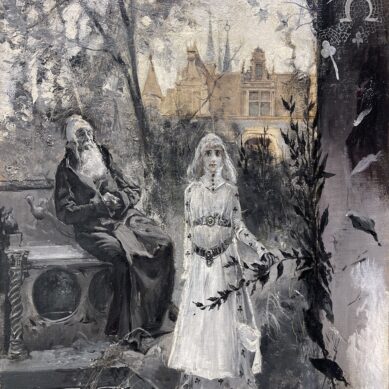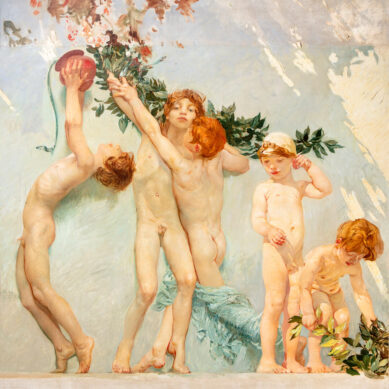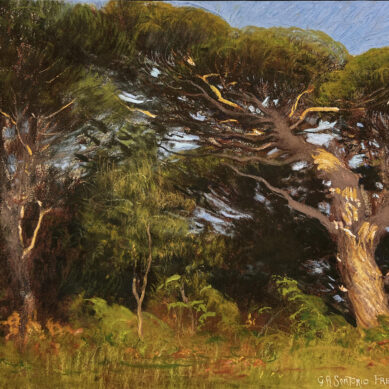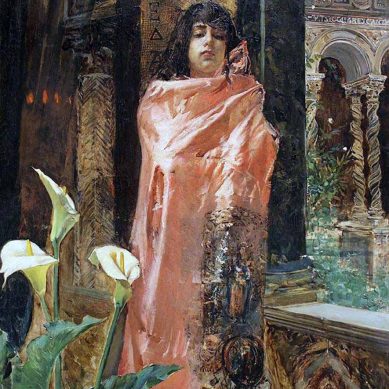You searched
Painter
Giulio Aristide Sartorio
Are you interested in the sales or the purchase of his artworks?
We buy works of this artist
and of other painters and sculptors from the 16th century to the first half of the 20th century
The Berardi gallery offers a free and without obligation service for evaluation of ancient and modern art . To find your way in the art market, very complex and full of nuances, it is better to rely on a professional consultant who can answer fast and concretely to your needs. The clarity of the answers will resolve effectively the need to estimate or sell an asset.
Contact us immediately without commitment
Answers also in 24 hours:
Giulio Aristide Sartorio
Giulio Aristide Sartorio
Giulio Aristide Sartorio is one of the most important Italian artists from the nineteenth and twentieth century, especially for the international vocation of his rich production. He was among the most important contributors to the spread of Pre-Raphaelite culture in Rome during the Symbolist season, as well as a protagonist of the elaboration of a celebratory and official language in the public decoration of the Nuova Italia, at the beginning of the twentieth century.
An artist with a multifaceted talent, Sartorio was a sophisticated interpreter of animalier art, as well as war paintings, landscapes of the Roman countryside, and the places he visited on his numerous trips to Latin America and the East. He reached the height of his artistic expression in the last years of activity, which were carried out between official commissions and a more intimate language elaborated in the so-called “Fregene Cycle”, where the protagonists of his final and highly accomplished works were family ties and light effects.
He was born in Rome in 1860 and was introduced to art by his grandfather Gerolamo and his father Raffaele, both sculptors. In 1876 he began to attend the Institute of Fine Arts under the guidance of Francesco Podesti (1800-1895). Those were the years in which Mariano Fortuny’s (1838-1874) neo-eighteenth century style genre painting was very popular in Rome, and his disciple Luis Alvarez Català (1836-1901) took young Sartorio as his pupil in the Roman studio in Via della Purificazione. Success then came quickly, especially thanks to the creation of anecdotal sketches, which were particularly à la mode and welcomed by the market. In 1833 he debuted with the painting Malaria (Dum Romae consulitur morbus imperat) at the International Exhibition of Fine Arts in Rome. The dramatic tones of his work, inspired by seventeenth-century realism, impressed the critics. The following year Sartorio visited Paris, and in 1885 took part in the Universal Exhibition in Antwerp, combining exhibitions with the intense graphic activity he had begun for “Cronaca Bizantina”. “Giulio Aristide Sartorio is a peculiar kind of artist. He is a rich and powerful colourist, a daring draftsman. He has been depicting the Byzantine era for a while now, that extraordinary age of decadence that is still largely unknown and obscure […] Those buildings and precious sculptures […] where images of chimeric animals, symbols, sacred enigmas and flowers, succeed one another in an infinite variety of forms and attitudes – elements that bear the imprint of a complex and refined art”[1]. These are the words used by Gabriele D’Annunzio (1863-1938) under the pen-name “Il Duca Minimo”, to praise young Sartorio on the pages of “La Tribuna”. The two met for the first time in Rome at the editorial office of “Cronaca Bizantina”, a journal based at Palazzo Sciarra, where Sartorio worked as an illustrator and D’Annunzio as a journalist. In 1886, Sartorio was part of the group of artists commissioned to decorate the editio picta of Dannunzio’s collection of poems Isaotta Guttadauro, full expression of aesthetic symbolism, in perfect agreement with the English Pre-Raphaelite trends that were becoming widespread in Rome at the fin-de-siècle. In 1886 Sartorio met Francesco Paolo Michetti (1851-1929) and became close to Nino Costa (1826-1903) and his group, In Arte Libertas.
In 1889 Sartorio took part in the Universal Exhibition in Paris with Caino’s Sons, and in the summer of that year, he stayed in Francavilla al Mare at Michetti’s house, where he made his first attempts at landscape painting. In 1890 he was commissioned by Earl Gegè Primoli the triptych Wise Virgins and Foolish Virgins (Galleria Comunale d’Arte Moderna, Rome), elaborated in a symbolist Rome where he used to attend the artistic milieu that gravitated around the figure of D’Annunzio – who showed him reproductions of Dante Gabriel Rossetti’s works. These were the years in which Sartorio also developed an interest in photography as a fundamental element for the creation of his works: for a long time, until his mature production, he used photos as a support that allowed him to study the subject and elaborate the painting.
Sartorio travelled to England very often and in 1893 he visited London, Liverpool and Manchester. There he had the chance to approach pre-Raphaelite painters such as Edward Burne-Jones. He wrote articles on Symbolism and Romanticism, collaborating with several journals including “Il Convito” and “Nuova Rassegna”. In 1895 he was proposed by the Grand Duke of Weimar a painting professorship at the School of Fine Arts where Sartorio worked for four years, and where he had the chance to approach the Secessions and study German Idealism and Nietzschean philosophy. It was at this stage that Sartorio started developing his animalier phase: during his trips to London, Paris, Weimar, he visited local zoos and drew inspiration from exotic wildlife for his early animalier paintings.
In the same year, he participated in the First Venice Biennale, where he would exhibit for many other years. In the 1899 edition of the Biennale he presented the diptych Diana of Ephesus and Gorgon and the Heroes – painted in Weimar and then acquired by the State – which can now be found in the collection of the National Gallery in Rome. It was at the beginning of the new century that Sartorio achieved critical acclaim. In 1901 he was appointed Academician of San Luca and married his first wife Julie Bonn, a painter from Frankfurt with whom he had a daughter, Angiola (born in 1903) – a marriage that would very soon. In 1904 he was among the founders of the group of artists XXV della Campagna Romana, and in 1906 he executed the frieze for the Sala del Lazio, at the National Fine Arts Exhibition in Milan, and another one for the Sala del Popolo, in Rome. The painting style of those years took two main forms: on one hand the intimate form of landscape painting, and on the other one commemorative and allegorical monumentalism (which led in 1912 to the creation of the encaustic Parliament frieze, to imitate the sculptural effect).
In 1915 he joined the war as a volunteer. He was captured by the Austrians during a battle on the river Isonzo and remained their prisoner at in Mauthausen for almost two years. This tragic experience inspired a series of war paintings, now widely dispersed, that are another important part of his varied production. At the end of the war in 1918, he married actress Marga Sevilla, with whom he had two children: Lidia, Lucio and Aristide. Sartorio lived with them in Rome, in a villa in Via di Porta San Sebastiano called Horti Galateae. These were also the years in which he ventured into cinema, collaborating with the production company Triumphalis. He travelled to Egypt to make a portrait of King Fu’ad I and went on to explore Palestine, Jordan and Syria. In 1921 Sartorio was the protagonist of an important personal exhibition at the Pesaro Gallery in Milan, while in 1922 he published Flores et Humus, Conversazioni d’Arte. Two years later, he travelled to Latin America on the Regia Nave Italia as a Commissar for Fine Arts. In 1929 he sailed on the military ship Duilio for a two-months cruise on the Mediterranean. At the same time he worked on the design of the mosaic decoration of Messina Cathedral, which remained unfinished due to an illness that would gradually lead to his death in 1932. Sartorio combined his last works with writing, and composed Sibillan – a poem he also illustrated – and Sansonetto Santapupa’s Tale (1926-1929), a fictional novel based on his life before 1883.
Elena Lago




















